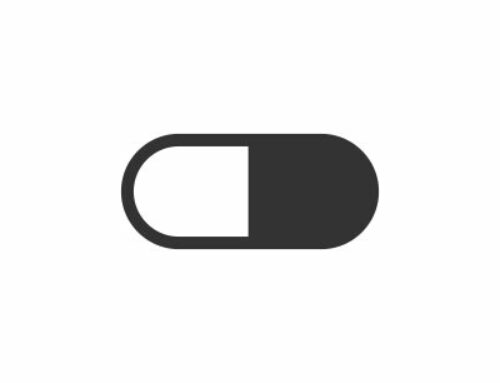Fertility tomorrow: A young startup works on revolutionizing fertility testing
Latest when women try to get pregnant do they become interested in their reproductive hormones. When trying to conceive, it suddenly becomes interesting for many women, what fertility hormones are and how they actually work. Why is there no ovulation without LH surge? What does estrogen have to do with the uterus lining? How much progesterone is there towards the end of the menstrual cycle?
But finding out about reproductive hormones can be quite complicated depending on where you live and what kind of health insurance you have.
Even the most expensive health systems, like the one in Germany where I live (the third most expensive one in the world!), are not very efficient in this sense and are not adapted to the new realities of women becoming mothers later in life.
 A young start-up from Munich (Colorimetrix) is trying to find new solutions for women who are trying to conceive that need quick and easy access to laboratory tests.
A young start-up from Munich (Colorimetrix) is trying to find new solutions for women who are trying to conceive that need quick and easy access to laboratory tests.
The company is working to make tests available to a broad audience. I talked to Leo Martinez Ph.D. from Colorimetrix:
DW: On the fertility market, there is no shortage of products that are based on little or none science at all. Vitamin supplements that are mostly useless, fertility apps that are able of not much more than capturing physiological data of their end users (so they can be sold to bigger companies). What makes Colorimetrix different?
Leo Martinez: Colorimetrix is a new form of technology that enables any smartphone to read colorimetric tests using the phone’s camera. We have integrated this core technology into a clinical study app called “Pearl”. This app is now in use at the Frauenklinik of the TU Munich to help doctors read and analyze hormonal readings of their patients remotely, allows participants to do the tests at home, and alerts them of key events during their cycle.
The tests used by the app are lateral flow immunoassays for hormones (LFIAs) and report the hormonal concentrations in urine and change color with concentration of the hormones in urine.
While the tests are very accurate, they are very difficult to read and interpret simply usingthe human eye. So, we packaged the reading technology together with hormonal profile analysis. What is different is that we do not provide estimations based on statistics of the cycle length or based on sympto-thermal methods such as temperature or cervical fluid. Instead, the fertile days are actually marked based on real measurements of what is happening inside the body every day, and the app constantly adapts to any changes.
So, this works for every cycle regardless of its length. We are currently evaluating how efficient this method is in helping people get pregnant faster (instead of having to wait up to 12 months trying blindly). The project was funded by EXIST-founder scholarship to make this technology available to the public.
DW: Most women know that ovulation has to do with the increase of certain hormones. But how can a woman measure them and determine their exact values? Does she always need to go to the doctor? Perhaps there is an easier way?
Leo Martinez: The menstrual cycle is regulated by 4 main hormones: lutheineizing hormone (LH), follicle stimulating hormone (FSH), progesterone (RP), and estrogen (E2). Traditionally, these hormones are measured in blood plasma, so, women generally have to go to the doctor or send samples to a specialized laboratory for analysis.
Additionally, the results are relevant for that one on which the testing was done. This method works well to determine if hormonal levels are generally within the physiological range and the cycle progresses as expected; however, one misses many daily oscillations, which are important as they’re the ones that determine a start of ovulation.
Therefore, having an easy-to-use solution at home is what we are aiming for so that women can measure their hormones at home and have their fertile days automatically displayed as a result. Real fertile days displayed in real time.
We developed algorithms that can not only read hormones, but that also understand hormonal profiles and precisely calculate the fertile window. Of course we are testing them further to see how accurate they can be, but preliminary results indicate that true fertile days can be accurately estimated up to 90% even if it is just 6 days before ovulation.
 DW: What is the difference between “Pearl” and other conventional ovulation tests?
DW: What is the difference between “Pearl” and other conventional ovulation tests?
Leo Martinez: The hormonal tests are very similar, and we use some that are very sensitive and carefully manufactured to be error-free. The difference is that the reading technology in the app allows anyone to read them at home so that it is like carrying a small lab in your pocket.
DW: What is the difference between “Pearl” and the fertility apps already available on the market?
Leo Martinez: Many apps are based on what we call the “statistical model” which means that fertility apps rely on counting calendar days to GUESS the woman’s ovulation and her fertile days.
The problem with these apps is that they do not tell the true error behind the estimation, and thus give users a false sense of certainty.
In reality, the inter-cycle variability and the inter-women variability of the cycle length is up to 4.5 days that means it can be today or in 9 days (4.5 up or down). The fertile window spans for about 6 days with 3 peak days and does not change in length; this is something that some solutions out there seem to confuse.
Consequently, many apps available on the market, actually most of them completely miss the true events, and only women with cycle variabilities of less than 2 days may find them useful. But women with perfect cycles don’t need apps to find out when they ovulate!
DW: What does a woman need or need to know or to have in order to measure her fertility hormones with “Pearl”?
Leo Martinez: To measure hormones at home, women need a fertility test kit which we provide for free for three months for participants who are a part of our clinical study, in addition to the mobile application. It’s a very simple test: when women wake up in the morning the app tells them which test to use (pink, blue, or purple). The test is exposed for approximately 5 seconds to the urine. After 15min, ladies need to take a picture of the test with their cell phone.
The app saves the values and if a particular hormonal feature is detected, such as a fall or peak, the app will update the fertile window information and select the most accurate calculation. The app is currentlyonly available for iOS, but we hope to soon get an Android version once we are closer to being medically certified in Europe.
DW: Thank you for this important information and good luck with “Pearl”!






